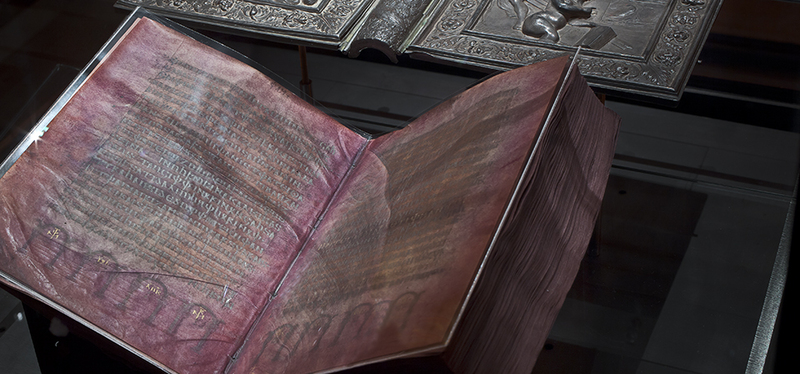Codex Argenteus
Date:
Early Sixth century
Location or Findspot (Modern-Day Country):
Italy
Medium:
Parchment
Dimensions:
24.5 × 20 cm
Description:
The Codex Argenteus (meaning "Silver Codex" or "Silver Book") is famous for preserving the now-extinct language of the East Germanic Goths. This sixth-century manuscript contains a fourth-century translation of the Greek Gospels written in silver and gold on purple-dyed parchment. The original translation into Gothic may have been produced under the supervision of bishop Ulfilas (ca. 311–383), who worked as a missionary in the north of modern-day Italy, converting Goths to Arian Christianity. According to the Byzantine Church historian Philostorgius (368–ca. 439), Ulfilas translated the Bible into the Gothic language, omitting the Book of Kings, which Ulfilas felt was too focused on warfare and might be a negative influence on the combative Goths. Ulfilas is also credited with developing the Gothic alphabet now preserved in the Codex Argenteus.
Relevant Textbook Chapter(s):
3
Repository and Online Resources:
• Visit the website of Uppsala University Library to read more about the Codex Argenteus, flip through the manuscript, or watch a film about it.
• Listen to parts of the Codex Argenteus set to music.
Tags:
Christian,
Western European,
Late Antique,
Ideology,
Bible



























